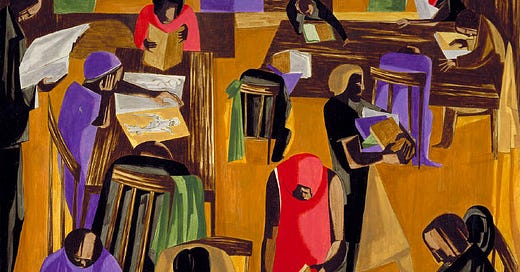The Contributist Reader is an experiment, both in substance and in form.
In substance, it is almost inexcusably bold in both its scope and its implication. It aims to trace the contours of a social philosophy that we believe to be a worthy successor to capitalism, as well as the path towards its widespread adoption. We have come to call this idea contributism, and I hope that you will find it compelling enough that you will come to excuse its boldness. Like capitalism, it is a thing too complex to define in a sentence or two, but if pressed, we choose to describe it by its primary emphasis: it is the right of all humanity to give. This reader aims to make plain what contributism is and why I am certain that you should be aware of it.
In form, this reader is experimental because it is not simply an intellectual pursuit, but an artistic one. When developing the ideas behind contributism, it became clear that the primary task of any attempt to see beyond capitalism is to remember what it is to see beyond capitalism. Among many things, capitalism is a learned normative lens — a way of seeing the world which colors our perspective and teaches us to make value judgments about ways of being (“everyone should graduate high school,” “this proposed law on parental leave is unfair,“ etc.). If we ever hope to see a world beyond capitalism, we must be able to take off this lens, at least momentarily, and gaze, blinking, into a new one — one through which light filters differently, and familiar sights and colors take on curious and surprisingly untested hues.
This work — the work of training the eye to see, unsee, and see anew — is not generally the work of journalists and essayists. It is perhaps more naturally the work of storytellers — of painters, bards, and poets. And so this reader does not aim to be a single work, but a collection of works, spanning many forms. Picture everything that follows as a series of gradually expanding concentric circles, the same central idea captured again and again, but in a diversity of forms — parable, poem, story, essay, etc. — each layer providing a new perspective, not better than, but more and differently detailed than, the last. The final picture will be, like capitalism, an amalgamation of things, but one that you will hopefully agree is a clearer lens through which to see, and a better system by which to organize ourselves, towards a good society.
Finally, in the spirit of contributism, this reader is a collective effort with a unified vision (e pluribus unum), and has not one author, but many. It is written in the tradition of the reader: an anthology intended to teach the audience, through example, the workings of a new language. The goal of a reader is to impart upon its audience the ability not only to read the language, but also to speak it and to write it. This is our goal as well, which means that we are always eager to accept and publish reader contributions, credited or anonymous, though by convention, all works in the reader are formally authored by our collective pseudonym, Pablo Parabola. In this way, The Contributist Reader is a continuous document, a lighthouse built, like anything worthwhile, by many ardent hands, brick by brick.
Read next: 1. What is contributism, plainly?





